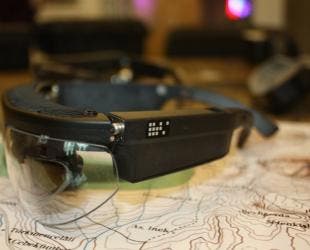NASA has announced its plans to implement smart glasses in their future missions. The space agency will work together with Osterhout Design Group (ODG) in order to develop the technology which will be used for virtual reality and augmented reality applications during human spaceflight, including repairs and other technical tasks.

In a press release, NASA and ODG declared that they are figuring out more ways in which the technology could be applied, mentioning that they will initially be tested for assisted reality applications, which might include “line of sight check lists, guided support via telepresence, and the ability to overlay digital markers on machinery or equipment while keeping the user’s eyes and hands focused on their task.”
“NASA and ODG will seek to advance technology and today’s announcement is a vote of confidence in the power, promise, and possibility of head worn augmented reality technology,” read the report detailing the work.
So far, the sensor uses position sensors to maintain full awareness of what is going on, where the astronauts is looking, and how the astronaut is moving. This idea isn’t entirely new – Google has been experimenting with their own version (Google Glass) for years, but the future of that application is uncertain. However, while there are many interesting and potentially useful for the general public, astronauts could make much more use of this tech.
“The ODG Smart Glasses are basically a full Android tablet you can wear on your head, with a high-end Qualcomm Snapdragon 805 chip. Only instead of a touchscreen, you get a transparent heads-up display: the equivalent of a 55-inch 3D screen floating eight feet in front of your face. With a pair of 720p microdisplays, you could use it as your own private 3D movie theater like a Sony HMZ headset, but without any of the cords. Or, with its 5-megapixel camera and boatload of sensors, use it for whatever augmented reality applications developers might dream up,” says Gizmodo in a recent article.
By using these glasses, they will be able to constantly monitor key parameters like engine status and habitability, without having to look someplace else, and they will be automatically alerted when something goes even slightly wrong.
“ODG’s Smart Glasses are revolutionizing the way we explore information and interact with our environments and each other,” said Ralph Osterhout, Founder and CEO of ODG. “ODG and NASA share an unwavering commitment to advance technology and today’s announcement is a vote of confidence in the power, promise, and possibility of headworn augmented reality technology.”
The research team will start testing them in an undersea lab that simulates space flight later this year, and hope to start implementing them as soon as possible.Sean Carter, a strategic partnerships manager at NASA’s Johnson Space Center in Houston, said by the fall, they will receive the feedback from astronaut and crew.
“It’s our goal to approach the programs shortly thereafter. I don’t know that the crew will let us wait that long”, affirmed Carter.
Interestingly enough, ODG initially started as a toy maker, and now sells electronic gear to governments. That’s quite the jump.






